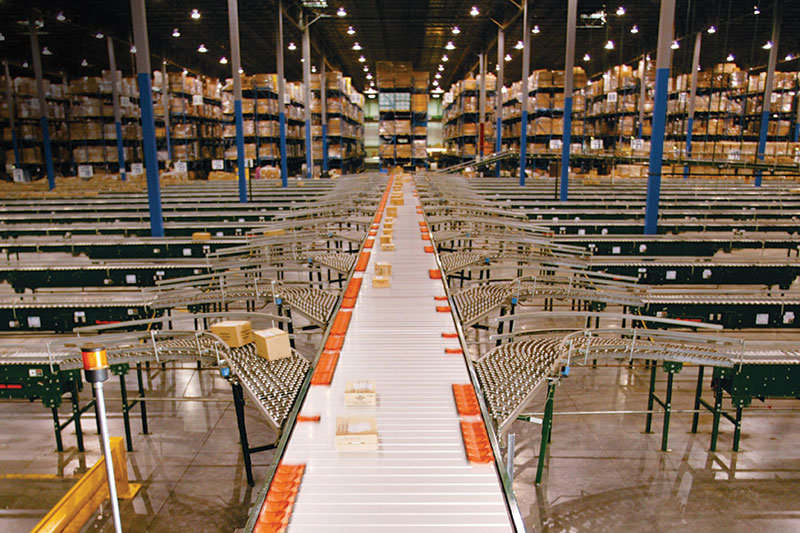The E-commerce Fulfillment Fastlane
E-commerce fulfillment is changing—fast. Not only are consumer buying patterns evolving, but digital platforms are accelerating online consumption and redefining business models across the globe.
The market is flooded with volume as demand continues to increase month over month at unprecedented growth rates for direct-to-consumer e-commerce,” comments Brian Weinstein, senior vice president of business development at Whiplash, a provider of omni-channel logistics services.
Retailers vying to be the go-to brand among consumers are especially pushing logistics providers hard for services such as speed, flexibility, choice, cost and overall customer satisfaction. Cross-channel shopping options and a seamless customer experience, no matter where or when consumers are shopping, is the expectation today. The expertise of 3PLs can help shippers cut costs, manage complex functions and implement innovative logistics technologies.
E-commerce fulfillment services have already greatly improved in scope and sophistication over the last decade. However, as Sebastian Wouters, SVP global e-commerce at Kuehne+Nagel states: “We have not seen the tip of the iceberg of what e-commerce will look like in the future.”
Nonetheless, Armstrong & Associates pegs e-commerce as the most rapidly growing 3PL market segment and estimates U.S. 3PL e-commerce revenues reached $53.3 billion in 2020, producing a three-year compound annual growth rate (CAGR) of 28% as e-commerce purchases exploded during the pandemic. A&A estimates e-commerce reverse logistics to grow at a rate of more than 20% per year.
Mathieu Friedberg, CEO, CEVA Logistics, expects 20% of his company’s revenues to come from e-commerce by 2025. The reason, he observes: “Retailers have come to both understand and appreciate the appeal and resilience of e-commerce, recognizing that marketplaces can be used to develop a new source of revenue and bolster their bottom line.”
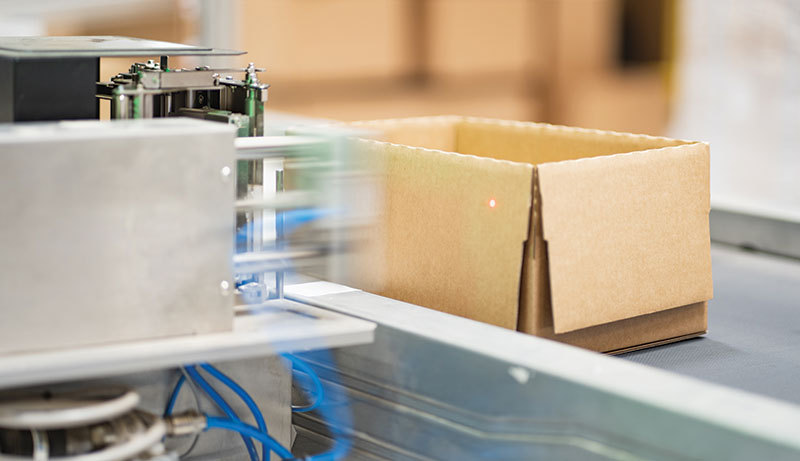
Investment in e-commerce warehouse automation helps move products quickly and efficiently to customers. Image courtesy of Kuehne+Nagel.
Market drivers
Multiple factors are driving e-commerce fulfillment services. The global COVID-19 pandemic has especially acted as a catalyst in accelerating pureplay companies involved in e-commerce, pushing the marketplace they serve forward as much as five years.
“COVID-19 acted like a sling shot by taking an already rising demand channel of D2C e-commerce and bringing it to historic growth levels,” remarks Weinstein. “This skyrocketing demand ended up on the doorstep of most fulfillment centers practically overnight, creating a meteoric rise for those providers which are built to scale and a crushing bottleneck for those who weren’t.”
Amazon has been a substantial player driving e-commerce fulfillment services. “Through Fulfillment by Amazon [FBA], Amazon has become a leading 3PL e-commerce fulfillment solution for small and medium retailers,” says Evan Armstrong, president, A&A. “Amazon has the second largest global 3PL warehousing network, estimated at 260.6 million square feet, and the largest network in North America with 185.0 million square feet. “Amazon’s e-commerce 3PL market share in the United States is estimated to have grown from 50% of the segment’s revenues in 2017 to 60% in 2020.”
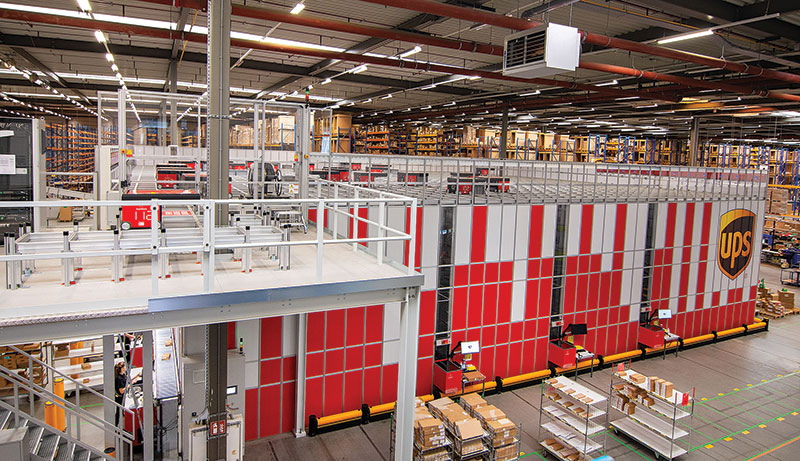
Investments in AMR and AGV integrate robotic warehouse technologies with WES. LMS and WCS software solutions reduce fulfillment costs, increase flexibility in managing volume fluctuations and provide actionable insights for continuous improvement. Image courtesy of UPS Supply Chain Solutions.
Additionally, Amazon is marketing its value-added warehousing and distribution 3PL services to off-platform customers, causing 3PLs in the e-commerce space to examine their fulfillment offerings. “This even more directly competes with traditional 3PLs focused on warehouse storage, handling and value-added services,” says Armstrong. “Amazon’s spend and pricing with UPS makes it very hard for 3PLs to compete with Amazon on a full-cost-to-serve basis. They tend to be competitive in warehousing, but don’t have Amazon’s buying power with UPS. Amazon’s scale limits small- and mid-sized retail e-commerce
fulfillment alternatives.”
And ever since Amazon implemented one-day and same-day fulfillment and last-mile delivery, consumers now expect to receive their shipments fast. “Many logistics companies are experiencing margin pressure as a result of e-commerce, in particular due to B2C deliveries to residential addresses,” says Steven Gundlach, president of UPS Global Logistics & Distribution.
Consequently, e-commerce sellers find its critical to position inventory closer to their customers to realize shorter shipping times and lower delivery costs. “They also must have the right products available and sufficient inventory to ‘win’ the on-line sale,” comments Wouters.
Value propositions
Today, digital fulfillment platforms such as end-to-end supply chain visibility, integrated distributed order management solutions, and personalized analytics are providing a forum in which manufacturers and retailers can more effectively position and manage their inventory by sharing data and information.
It’s increasingly common to see the larger fulfillment providers tailor services to broad customer groups, generally defined as brands (e.g. Nike.com), retailers (e.g. Macy’s) and marketplaces (e.g. Amazon).
“Today’s hybrid fulfillment models have gone beyond BOPIS and BORIS with new models like ‘dark stores’ and stores acting as stores and mini fulfillment centers or even stores used as showrooms only (product is shipped to the consumer),” observes Brian Weinstein, senior vice president of business development at Whiplash.
Services required can vary quite significantly. “The strongest platforms now and in the future are those that can integrate supply chain information,” says Nick Bailey, head of research at Transport Intelligence (Ti).
Already the largest fulfillment providers operate globally distributed networks, filling orders anytime, anywhere, from any device.
“The ‘omni-channel’ approach is now somewhat standard, with sales from any retail channel often fulfilled through a single logistics network that serves all channels a retailer operates,” Bailey says. “This set-up is also scalable by design and allows the fulfillment provider to support retailers in other ways, including new market entry, last-mile carrier management and inventory management, and into services such as integrated tax, duty and Customs management and sometimes payment processing.”
CEVA Logistics assists customers that run e-commerce marketplaces on national, regional and global scales.
“Our customer-centric, platform-agnostic focus to technology means we can either build systems internally or integrate external platforms to deliver value to our customers,” reports Niels Weithe, executive vice president of global e-commerce, at CEVA Logistics. “We serve customers new to online sales; customers expanding across geographical markets; and customers scaling up or down because of seasonality.”

Technology
Technology, such as scalable automation, is driving many of the changes in distribution and fulfillment today. Not only can automation supplement labor; it can be scalable and, therefore, expand market opportunities.
This has led UPS to invest heavily in automation to enhance digital connections with customers, increase fulfillment center efficiency, and integrate fulfillment processes with final-mile delivery solutions. Investments in autonomous mobile robots (AMR) and automated guided vehicles (AGV) integrate robotic warehouse technologies with warehouse execution systems (WES), labor management systems (LMS), and warehouse control system (WCS) software solutions that reduce fulfillment costs, increase flexibility in managing volume fluctuations, and provide actionable insights for continuous improvement.
“Shippers can benefit by our ability to handle spikes in demand, lower cost of service, and improved quality without adding significant resources and other assets,” says Gundlach. “Lower capital investment, improved ROI and creative deployment strategies are enabling UPS to create fulfillment solutions no one thought possible in the past.”
While 3PL fulfillment options are plentiful in the U.S. market, only key niche players have the resources to scale up. “And all must contend with labor challenges to address not only labor shortages, but the more intensive labor requirements in the DC from D2C e-commerce fulfillment versus wholesale and retail distribution,” says Weinstein.
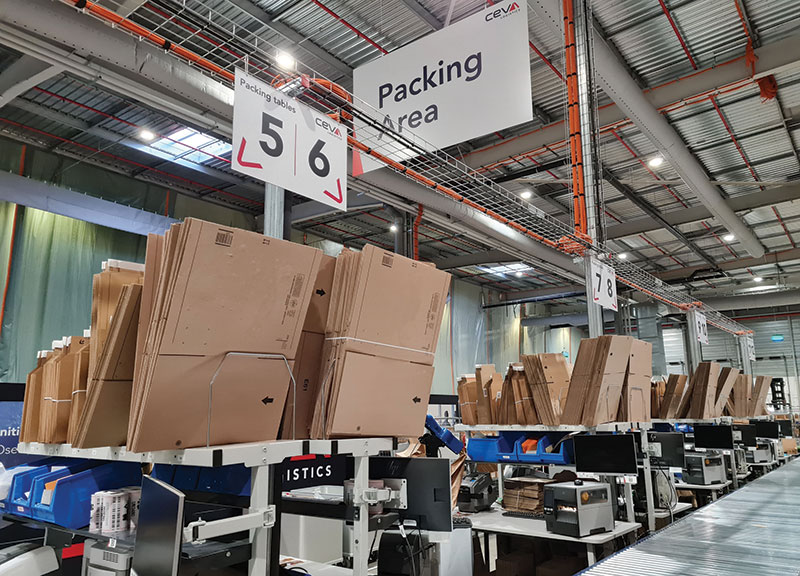
CEVA Logistics is investing in new fulfillment centers and warehouse automation technologies worldwide. Image courtesy of CEVA Logistics.
Orders need to be picked quickly when received, making picking technologies and processes more crucial to meet tighter deadlines. Even more critical are inventory planning and receiving. Plus, consumers want detailed information about the progress of their orders.
“For this visibility, good data and information about the fulfillment and shipping process is needed and needs to be shared in real-time,” says Wouters.
On the inbound side, managing supplier orders, shipments, and exceptions are even tighter. “This is enabled by better technologies, better information, and more data integrations with all partners that execute parts of the supply chain,” Wouters continues.
Particularly challenging, e-commerce warehouses require up to three times as many employees than traditional retail warehouses. However, the labor market is tight, wages are increasing, and retention is increasingly difficult as competition intensifies, particularly during peak season.
The last-mile of an e-commerce order can also be costly—roughly 30% to 40% of delivery costs, Armstrong notes. Subsequently, 3PLs are having to invest in additional warehouses, technology, and fulfillment centers.
CEVA Logistics, for example, is investing heavily in new e-commerce fulfillment centers worldwide, warehouse automation technologies and employee wearables, as well as cross-border e-commerce and last-mile, continued development of IT and operational systems.
A.P. Moller-Maersk recently acquired B2C/e-commerce logistics and parcel delivery company Visible Supply Chain Management. The acquisition adds nine fulfillment locations to its portfolio of 45 warehouses. These enable shippers to reach 75% of the U.S. population within 24 hours and 95% within 48 hours.
“That type of delivery speed is attractive to online shoppers and drives decision-making,” says Narin Phol, managing director for Maersk’s North America region. “The acquisition also helps us with last-mile delivery capabilities as we gain a TMS they use for their 200 million annual parcel deliveries. This helps customers with their international and domestic sourcing and fulfillment.”
The acquisition complements Maersk’s ocean product by giving customers an integrated e-commerce logistics capability.
“Our global integrator strategy to connect and simplify customer supply chains identified e-commerce logistics as an area where we needed to strengthen our capabilities,” says Phol. “Our customers have experienced high growth in their e-commerce channels and asked for help on their direct-to-consumer supply chains.”
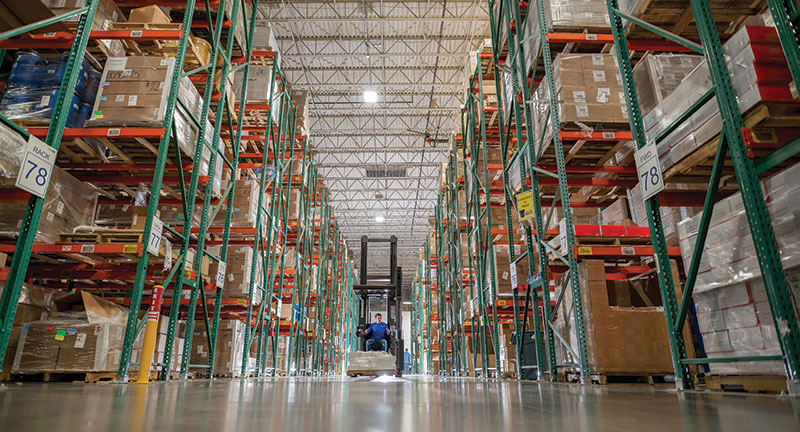
A.P. Moller-Maersk’s recent acquisition of Visible SCM adds nine fulfillment locations to its portfolio. Image courtesy of Maersk Logistics.
Forward directions
The evolution of e-commerce will continue in scale and demand, and types of services, innovations, and technologies. The reason: new e-commerce entrants, ever-changing consumer behaviors and needs, new industries entering on-line trading, and new marketplaces and emerging markets where e-commerce is growing exponentially.
“In the last-mile space, there will be a focus on better service levels, more efficient shipping options, less carbon emissions and new greener and cheaper delivery technologies,” predicts Wouters.
Consequently, same-day delivery will result in further growth in warehouse networks and sites. Labor shortages and increasing peak factors also require more warehouse automation.
“Another factor will be the increase of truly omni-channel facilities for certain businesses looking for greater integration and flexibility,” says Niels Weithe, executive vice president of global e-commerce at CEVA Logistics.
Here Weinstein stresses the importance of finding a 3PL fulfillment provider that can offer flexibility and scalability in their systems and processes.
Gundlach sees the integration of visibility systems playing a fundamental role and allowing e-commerce fulfillment services to become more agile. “Visibility will play a crucial role in allowing inventory levels to be constrained while ensuring customers’ demands for ‘instant’ fulfillment is met,” he says.
In addition to large complex fulfillment solutions, Gundlach also sees logistics providers needing to offer more turn-key fulfillment solutions that meet the needs of small- and medium-sized businesses.
Finally, to improve the online experience for consumers, Wouters sees inbound and supplier networks evolving and becoming more global with increasing connections between marketplaces, thereby resulting in more cross-border fulfillment shipments.
“Cross-border fulfillment will make the world a larger global marketplace where language, borders, and currency no longer are barriers to ordering specific items from a country further away,” Wouters says.
Cross-border fulfillment is already driving demand for air cargo capacity. CEVA Logistics offers a program of owned, controlled air cargo capacity that offers consistent pricing and
pricing. After all, the sky is the limit for e-commerce fulfillment. •

Article Topics
E-commerce News & Resources
UPS reports first quarter earnings decline Solving the last-mile delivery issue in New York City UPS is set to take over USPS air cargo contract from FedEx UPS presents updated financial goals and strategic targets at its investor day FedEx fiscal third quarter earnings see gains amid ongoing volume declines National Retail Federation 2024 retail sales forecast calls for growth Will recent talks between FedEx and Amazon lead to a reunion? More E-commerceLatest in Logistics
Shipment and expenditure decreases trend down, notes Cass Freight Index March trucking tonnage trends down, reports ATA FTR Shippers Conditions Index enters negative territory DAT March Truckload Volume Index sees modest March gains National diesel average, for week of April 22, is down for the second straight week UPS reports first quarter earnings decline LM Podcast Series: Assessing the freight transportation and logistics markets with Tom Nightingale, AFS Logistics More LogisticsSubscribe to Logistics Management Magazine

Find out what the world's most innovative companies are doing to improve productivity in their plants and distribution centers.
Start your FREE subscription today.
April 2023 Logistics Management

Latest Resources


